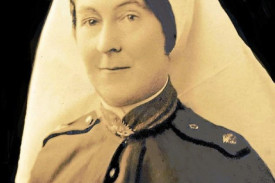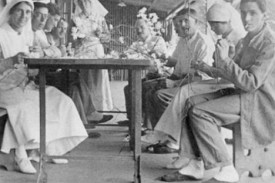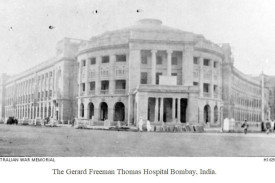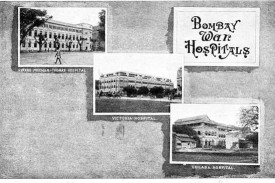General News
1 February, 2025
Katie Valerie Stimson
Katie Valerie Stimson was the third child born into a family of five children to Augustus and Mary (née Jones) Stimson.
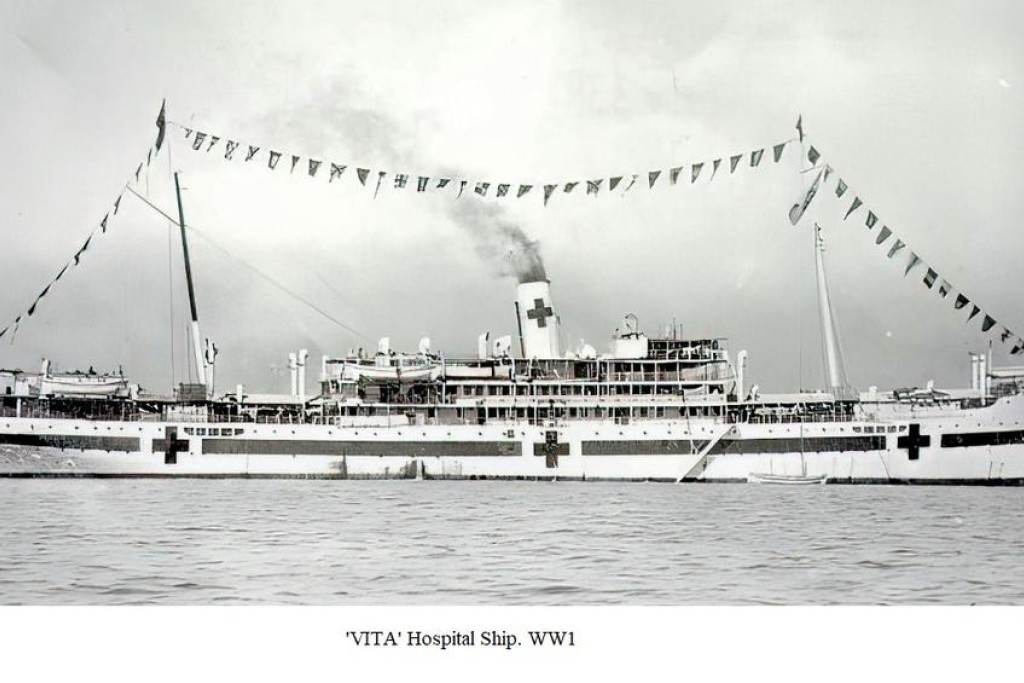
She was born on October 12 1881 in Leeor South, near Kaniva.
On leaving school Katie decided to become a nurse.
In May 1916, after training, Katie successfully applied for the position of matron of Wentworth Hospital in New South Wales, where she remained for 12 months.
At the age of 36, Katie enlisted as a staff nurse in the Australian Army Nursing Service (AANS) on October 6 1917 in Keswick, South Australia.
Katie embarked from Adelaide on board the ship Ormonde on March 8 1918, disembarking in Bombay, India, where she was billeted on the hospital ship Egypt until she was posted to the Gerard Freeman Thomas Hospital in Bombay in April 1918.
In June she was transferred to Colaba War Hospital, where she mainly nursed patients from the British Garrisons in India.
She remained here until March 13 1919, when she was transferred to the hospital ship Vita, which had been converted into an ambulance transport ship.
For the next seven months Katie remained on transport duty between Bombay, Basra (Iraq), Suez (Egypt) and Marseilles (France).
Before World War I, about 60 nurses from Australia served in the South African War from 1899.
AANS was an Australian Army reserve unit which provided a pool of trained civilian nurses who had volunteered for military service during wartime.
AANS was formed in 1902 by amalgamating the nursing services of the colonial-era militaries and formed part of the Australian Army Medical Corps.
During World War I, more than 2286 women joined the AANS AIF for overseas service.
Hundreds more served in the AANS AMF on home service in Australia.
Australian nurses also worked with other organisations during the war, such as Queen Alexandra’s Imperial Military Nursing Service, the Red Cross Society and privately funded facilities.
These courageous and dedicated women worked in difficult and sometimes terrifying conditions.
They cared for patients in military clinics and hospitals near battlefields and on ships and trains.
Australian military nurses served far from home, caring for the sick and wounded on land and sea.
Their skills saved many lives.
The Indian Army Nursing Service, known subsequently as Queens Alexandra’s Military Nursing Service in India (QAMNSI), was established in 1888.
With the outbreak of war in Mesopotamia in 1916, many QAMNSI were sent to nurse the wounded there.
Unable to cope with the casualties, the Indian hospitals hurriedly appealed for help.
AANS nurses were dispatched to small hospitals all over India and were employed on British hospital ships working from India westwards to the Persian Gulf and eastwards through to Hong Kong and Vladivostock (Russia).
Although their experiences varied widely, they took it all in their stride.
From July 1916 until 1919, some 560 members of AANS served in India.
They found themselves challenged by cultural differences with the local staff and the English sisters, nursing exotic diseases in primitive medical circumstances and coping with a vastly different climate.
The nurses cared for patients with diseases such as malaria, smallpox, Spanish influenza and cholera in trying climatic conditions.
The nurses worked in the most appalling heat imaginable, with some temperatures in the hospitals ranging from 46°C to 51°C.
There was no relief from such extremes on the hospital ships, either, as records show that on one voyage to the Gulf the shade temperature on deck was 51°C.
After her nursing service had finished, Katie finally sailed for Australia on board Medic on December 1 1919.
Twenty-three days later, on December 24, she disembarked in Adelaide.
She was discharged from AANS on March 17 1920.
After her discharge Katie gained a position as matron of the Port Augusta Hospital in SA in September 1920, where she remained for a few years and received her midwifery certificate.
She then moved back to Adelaide and by 1924 had gained a position as matron of Edwardstown Industrial School in Edwardstown, SA.
The school was a receiving home for children from varying circumstances who were placed into state care.
Many had suffered the loss of or desertion by one or both parents.
Others had been removed from their parents because they were defined as ‘neglected’.
Some children with physical and/or intellectual disabilities were also placed at the school.
Katie never married.
On November 13 1967 she died in Grange, SA, aged 85 years.
She was buried with her parents in North Brighton Cemetery, SA.
There is no headstone or any acknowledgment of her being present in the grave.
With thanks: Sally Bertram, RSL Military History Library. Contact Sally at sj.bertram@hotmail.com or call 0409 351 940.
